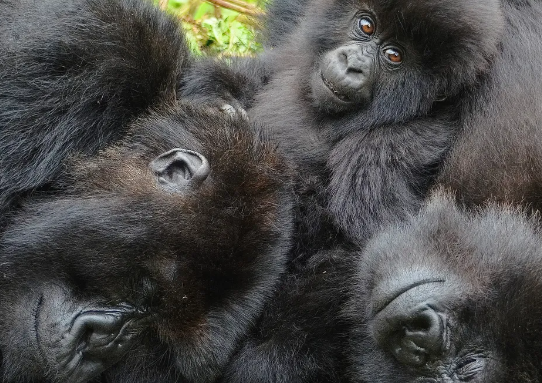The Role of Female Gorillas in the Group
Understanding the dynamics of gorilla social structures offers valuable insights into the behavior of these magnificent creatures, especially regarding the crucial role females play. Female gorillas contribute significantly to their groups, influencing everything from social hierarchy to nurturing future generations. By exploring their roles, we gain a deeper appreciation for their importance in the animal kingdom.
The Foundation of Social Structure
Female gorillas often serve as the cornerstone of their social groups. In a typical gorilla family, the silverback male may dominate, but it’s the females who form the stable core. They establish strong social bonds with one another, forging friendships that can last a lifetime. This interconnectedness helps maintain harmony within the group, as females often mediate conflicts and provide emotional support. Their ability to navigate social dynamics is vital for the group’s overall well-being and success.
Nurturers and Caregivers
One of the most significant roles of female gorillas is that of nurturer and caregiver. Females are responsible for raising the young, teaching them vital survival skills and social behaviors. A mother gorilla tends to her baby with remarkable care, providing not just food, but also the emotional security needed for healthy development. This nurturing nature extends to the entire group, as females often help care for each other’s offspring—what is known as alloparenting. This behavior establishes a supportive community where young gorillas can thrive.
Protectors of the Group
In addition to their nurturing roles, female gorillas also act as protectors of their group. They play a pivotal role during times of danger, especially when facing threats from predators or rival groups. Female gorillas often exhibit protective instincts, rallying together to defend their young or help the silverback maintain stability. Their vigilance and teamwork in these situations underscore their importance—not just as caregivers, but as active participants in ensuring the safety of their family unit.
Conclusion
Female gorillas are essential to the health and harmony of their social groups. Their roles as the foundation of social structure, nurturing caregivers, and vigilant protectors illustrate the depth of their influence in the wild. Learning about these incredible creatures enriches our understanding of biodiversity and the intricate web of life. For those curious about gorillas and their behavior, exploring more about them could spark a lifelong fascination with wildlife and conservation.

